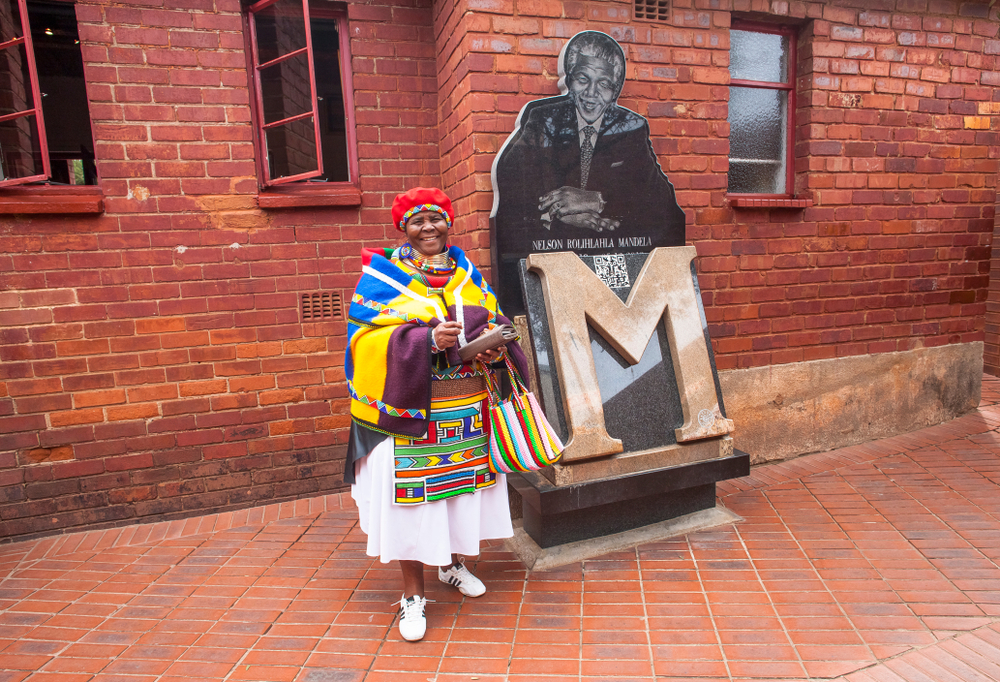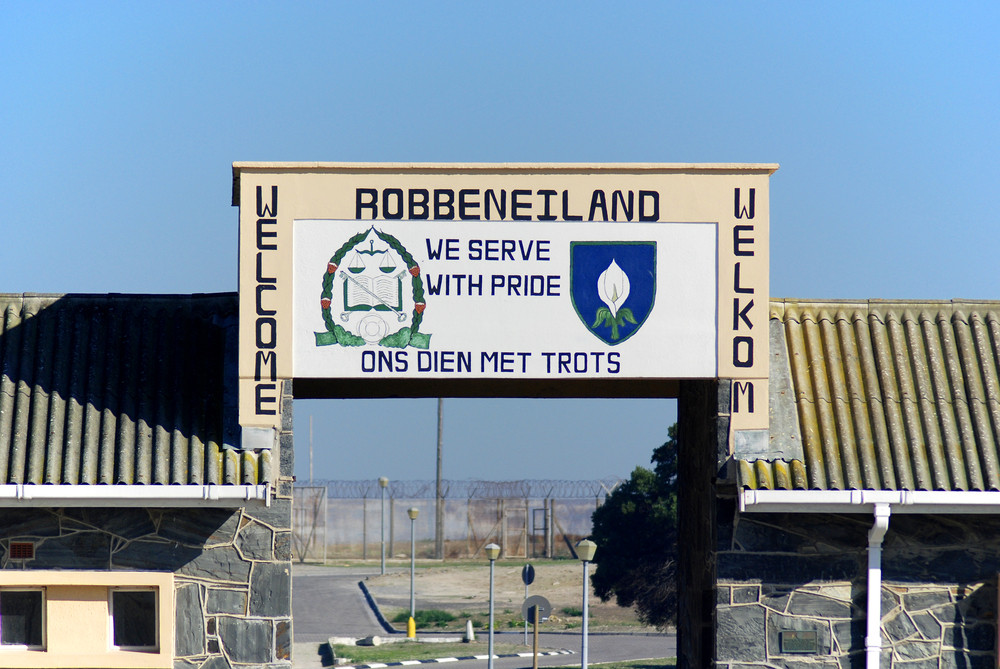There are a number of South African museums and heritage sites you can visit if you want to celebrate our most well-known statesman, Nelson Mandela’s, centenary. But most who visit these sites are usually in search of something a little more. They’re usually looking for a way to get more closely acquainted with the man himself. The man behind the activist and humanitarian who lead the country’s liberation movement. To trace the footsteps of our Tata Madiba – the father of our new nation. Of course, unless you know someone personally and intimately, it can be rather presumptuous to ever imagine walking in their footsteps – especially a life such as his, marked both by great hardship and achievement.
I like to think however that one is probably closest to uncovering a person’s true self when visiting their home – the place they are meant to be at ease and leave little clues of their heart behind. With this in mind, I’d advise you to visit the various places Mandela called home to see different facets of his personality.
Qunu, Eastern Cape: The young herd boy

This village near Umthatha in the Eastern Cape is where Nelson Rolihlahla Mandela grew up and by his own admission, had the happiest days of his childhood tending the family’s cattle and partaking in games and other typical rural activities. Few places give one insight into a person’s life as the place they grew up, especially if he was so happy there that he also chose it as his retirement and final resting place.
There are two attractions here and figuring out which is which can be a little tricky. The first is the Nelson Mandela Youth and Heritage Centre in Qunu, literally a few metres away from his childhood home where many of his direct relatives, members of the Madiba clan, still reside. It still consists very much of consistence farmers and huts and for this reason the museum serves not only as a historical establishment, but also one that seeks to equip the community through tourism. In the words of Mandela himself, it’s a “a living museum….. that embraces development and inspires people through education, culture and tourism.”
The centre offers a tour through the village, as well as programmes where youths can experience the way Mandela and his peers grew up. Unfortunately, it is closed for renovations at the moment, but keep checking into the site to see whether it is open at the time of your visit. Admission is free and the visit should take between 1 and 3 hours.
The other part is the Nelson Mandela Museum in Umthatha, a town roughly 30 kilometres away from the Qunu village. I’ve personally spent many a road trip through the town and the road is notorious for its poor condition and prevalence of cattle crossing or being herded across the road in their beautiful, unhurried nature. Though it poses a great risk to drivers unaware of the possibility of such a meeting, it gives you an idea of the simplicity and natural splendour of the farm life Madiba must have loved.
Vilakazi Street, Orlando, Soweto: The lawyer and activist

This was the first home Mandela proudly owned after having lived in a single room in one of Johannesburg’s other townships, Alexandra. He lived here with his first wife Evelyn and then his second wife and fellow activist, Winnie Madikizela-Mandela from 1942 till the 1990’s.
It speaks of a successful man, one who values the home life but who unfortunately was seldom home due to his responsibilities as activist and lawyer, as well as hiding from the apartheid authorities.
“It was the opposite of grand, but it was my first true home of my own and I was mightily proud. A man is not a man until he has a house of his own.” Even after his release from prison he returned to this, the Mandela House, and said of it, “for me No. 8115 was the centre point of my world, the place marked with an X in my mental geography”.
You can visit the newly restored home at R60 a person, Mondays to Sundays 9:00 to 16:45. It’s only a 20 minute visit, so be sure to visit some of the other Vilakaze Street tourist attractions while there.
Liliesleaf Farm, Johannesburg: The fugitive, the activist and groundskeeper

You may be surprised upon your arrival at this heritage site and 18 month long home of Mandela to find it’s in the middle of the busy and affluent Johannesburg suburb of Rivonia. Back in the 1960’s when Mandela was posing as Liliesleaf groundskeeper David Motsamayi, hiding from the authorities, it was still a farm. Although it must have been stressful living in hiding, pretending to be someone else at that, it was also a place of great importance for the liberation movement and as it turns out, rest for Mandela.
“The loveliest times at the farm were when I was visited by my wife and family… The children could run about and play, and we were secure, however briefly, in this idyllic bubble.” A visit to this Madiba home can take between 45 minutes and an costs R110 for adults. It’s open Mondays to Fridays from 8:30 to 17:00 and Saturdays and Sundays from 9:00 to 16:00. It’s a great place to take a break from the city bustle at the café and overlook the beautiful grounds.
Constitution Hill (prison and court), Johannesburg: The influential prisoner

“It is said that no one truly knows a nation until one has been inside its jails. A nation should not be judged by how it treats its highest citizens, but its lowest ones.” It is with this quote of Madiba in mind that I recommend visiting Constitution Hill, a place many were forced to live for breaking various petty apartheid laws.
Mandela was twice incarcerated here, first in 1956 and again in 1962. Non-white prisoners, including Mahatma Ghandi, were kept in Number Four, but Mandela was deemed too influential or dangerous to be kept with other black inmates and therefore become the only non-white to be kept in the traditionally white part of the prison, The Old Fort. Visit the prison and get an idea of the terrible conditions many of the liberation movement’s freedom fighters were kept in. Then visit our Constitutional Court – a place of beautify both for its artistic value and the values of equality it now stands for. It is open daily from 9:00 till 17:00.
Robben Island, Cape Town: The patient inmate

Although I am sure he would not have consider this prison island outside of Cape Town home, he spent 18 years here from 1964 to 1982, studying, thinking and forgiving. During this time of hard labour he was only allowed one 30 minute visit a year, and sending and receiving one letter every 6 months. But he emerged a changed man, ready to lead a nation.
Referring to his final release from the Victor Verster Prison where he was kept for a few months after his lengthy stay at Robben Island, Mandela said, “As I walked out the door toward the gate that would lead to my freedom, I knew if I didn’t leave my bitterness and hatred behind, I’d still be in prison.”
The trip to the island takes between 30 and 6 minutes by boat or ferry and the tour itself around 4 hours. Tours run from Mondays to Sundays at 09:00, 11:00, and 15:00 and cost R360 for an adult.
Houghton Estate: The statesman, the retiree

Mandela lived in two different houses in Houghton Estate during and after his term as president. The second, commonly known as Nelson Mandela Houghton Estate is where he died and will soon be turned into a boutique hotel. Visitors from all over the world have decorated the garden of this beautiful home in the affluent jacaranda tree lined suburb with signed rocks. Just up the road you can visit the Nelson Mandela Centre of Memory to view his post presidential office. While in the area, do drive through the beautiful streets and catch glimpses of the magnificent houses and estates before relaxing at the Johannesbug Zoo, or Zoo Lake. If you happen to be a golfer, play a round at a number of good golf courses in the area – Houghton Golf Club, Royal Johannesburg & Kensington Club, Wanderers Golf Club
Mandela was finally laid to rest in Qunu, where he also had a final home with his third wife, Graça Machel. Our journey to discover a man through his homes comes full circle and whether you choose to go the journey alone, with a guide or with a local, be sure to do it with a book in hand. Reading his autobiography, A Long Walk To Freedom, on your journey will make for an immersive experience and reveal much more about the man than brick and mortar ever will.